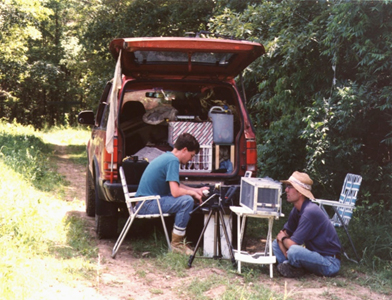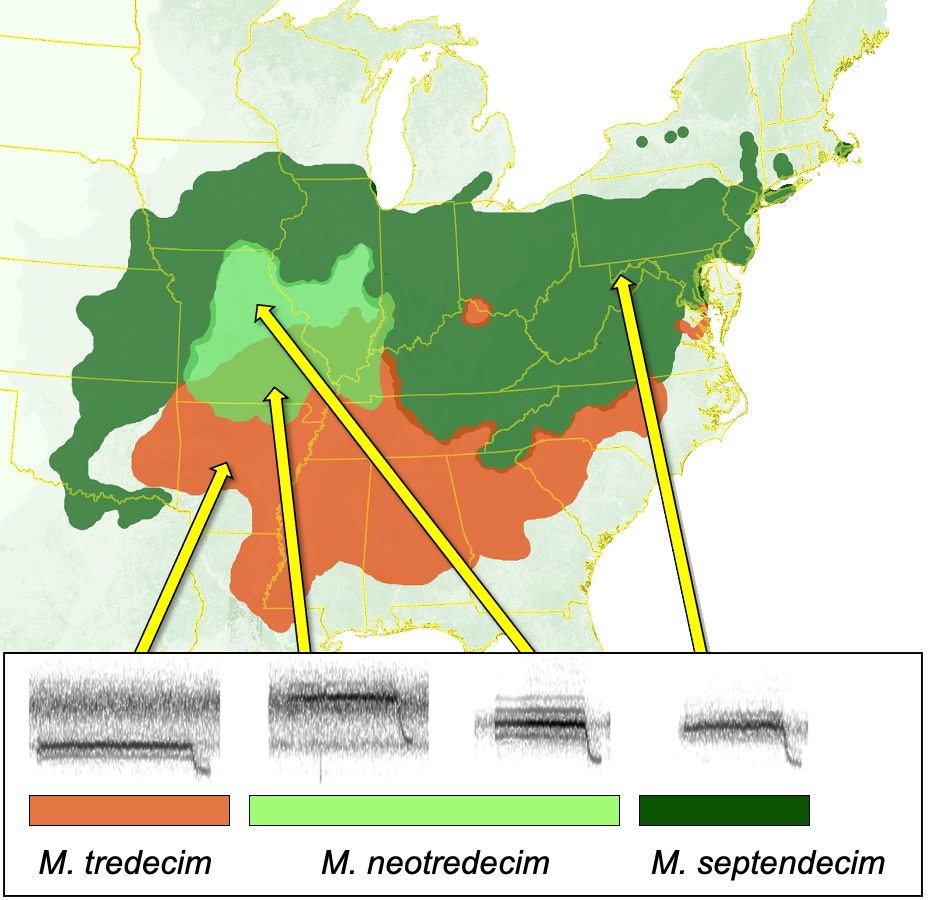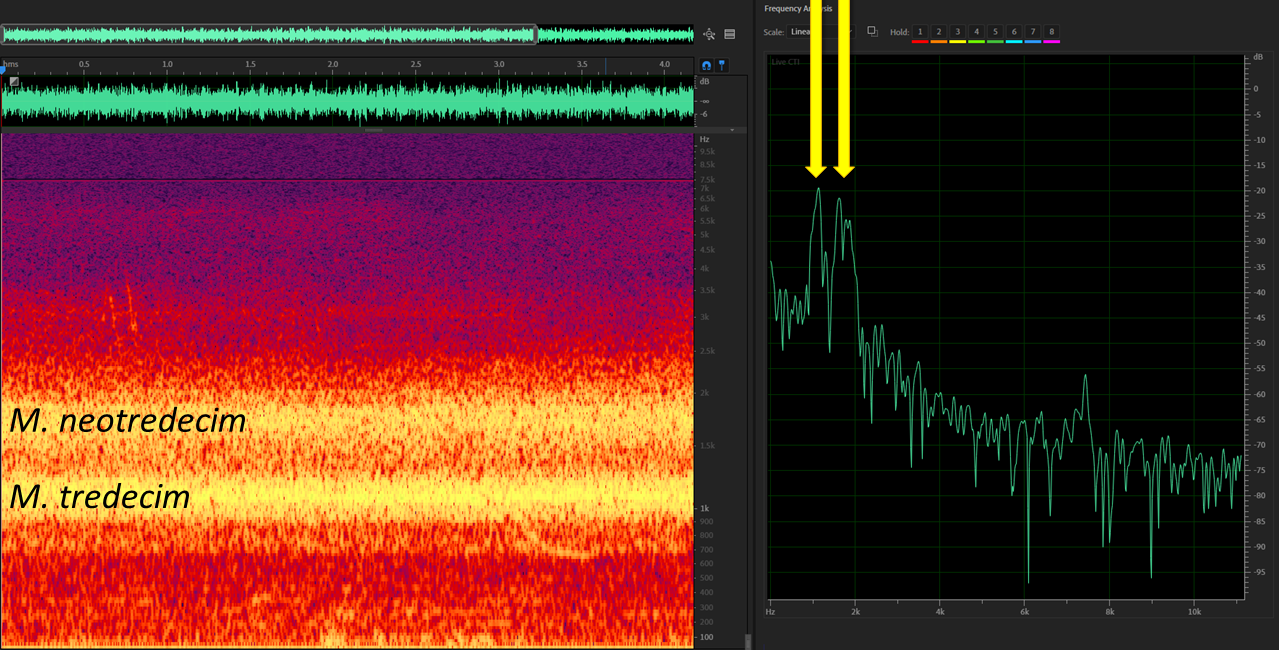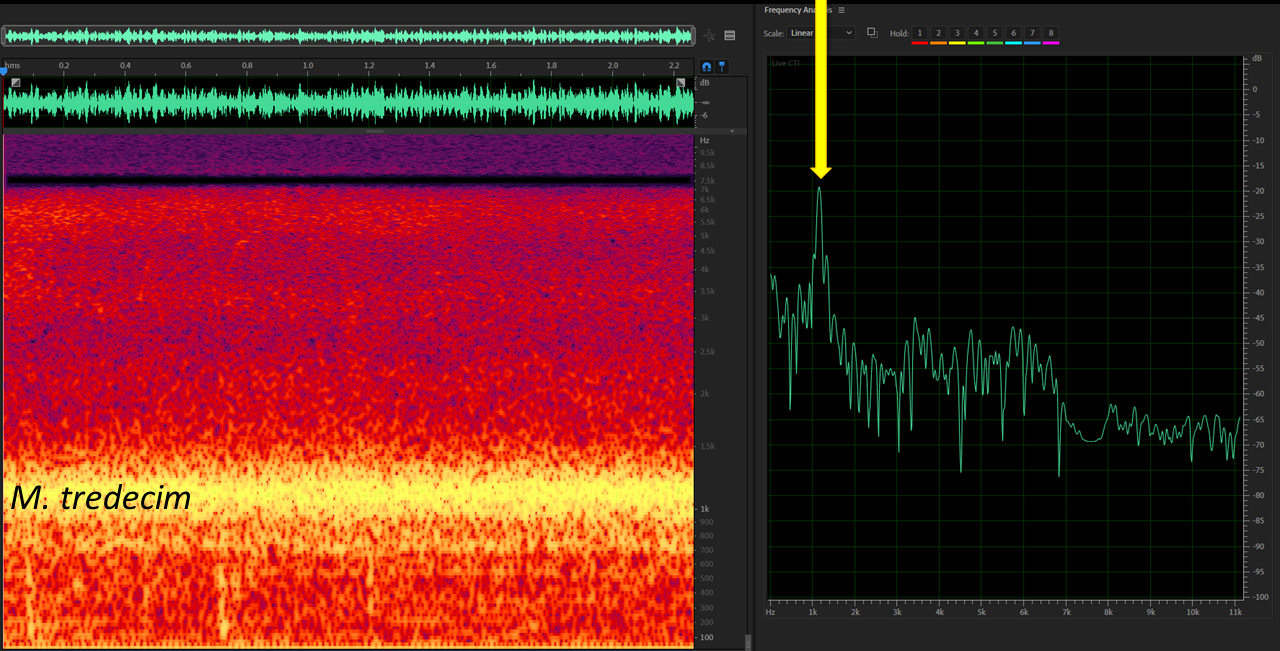Reproductive Character Displacement in Magicicada
In 1998, while studying Brood XIX in northern Arkansas, we discovered periodical cicada choruses with two peak acoustical frequencies (ca. 1.1 and ca. 1.7 kHz;) within the “anomalous zone” reported by Martin and Simon, in which two mtDNA haplotypes (A and B) of 13-year M. -decim could be found. The high-pitched cicadas corresponded to the northern haplotype (A) and the low-pitched cicadas corresponded to the southern haplotype (B). We used a series of playback experiments to demonstrate that the two types of 13-year M. -decim were reproductively isolated. Thus, the northern type (mtDNA lineage A) was named M. neotredecim while the southern type (mtDNA lineage B) retained the name M. tredecim.

By analyzing field recordings and conducting playback experiments, we demonstrated that where M. neotredecim and M. tredecim overlap, they exhibit a pattern of reproductive character displacement in calling song pitch and female pitch preferences. Within the zone of displacement, the dominant male call pitch of M. neotredecim is 1.7 kHz, while outside the contact zone, its call pitch is ca. 1.4 kHz, identical to that of its putative ancestor, M. septendecim.

Choruses in the overlap zone typically contain three species: M. neotredecim, M. tredecassini, M. tredecula, and M. tredecim. These choruses sound unusual, not only because the M. neotredecim have displaced, high-pitched calls, but because there are two clearly defined pitches in the chorus sound, delineated by arrows in the power spectrum below:

By contrast, just south of the overlap zone, where M. neotredecim is no longer present, choruses sound like this, and only a single pitch (delineated by the arrow) is clearly defined:

This video describes the pattern of reproductive character displacement in more detail.
Literature
Cooley, J. R., C. Simon, and D. C. Marshall. 2003. Temporal separation and speciation in periodical cicadas. Bioscience 53:151-157.
Martin, A., and C. Simon. 1988. Anomalous distribution of nuclear and mitochondrial DNA markers in periodical cicadas. Nature 336:237-239.
Martin, A., and C. Simon. 1990. Differing Levels of Among-Population Divergence in the Mitochondrial DNA of Periodical Cicadas Related to Historical Biogeography. Evolution 44:1066-1080.
Simon, C., J. Tang, S. Dalwadi, G. Staley, J. Deniega, and T. R. Unnasch. 2000. Genetic Evidence for Assortative Mating between 13-Year Cicadas and Sympatric “17-Year Cicadas with 13-Year Life Cycle